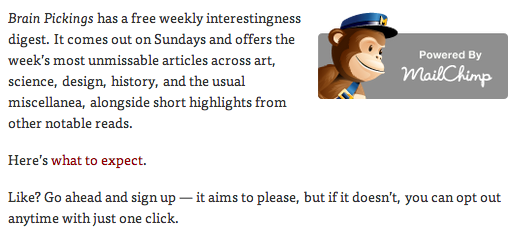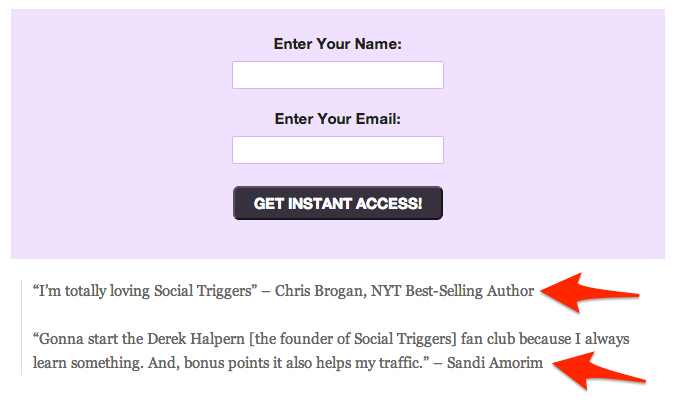
Brian Honigman is a marketing consultant, speaker and a freelance writer. This post originally appeared on the Jumplead blog.
You’ve planned out the perfect strategy to attract subscribers, leads and eventually customers for your business, but now it’s time to build trust with these individuals and establish a strong relationship from the start.
According to Webbed Feet, 92 percent of consumers say they trust earned media, such as social media, word of mouth and recommendation from friends and family, above all other forms of advertising.
The question then is how to emulate the trust a person feels from earned media with your organization’s owned and paid media.
The memory your subscribers, leads and customers have of your company must remain positive to ensure they think highly of your content, products and services, especially when it comes to recommending or purchasing from your business.
Here’s how to build that trust from your first interaction with subscribers, leads and customers.
1. Set expectations with email and other marketing channels
One thing that will build trust from the very beginning is being clear on what a person should expect from signing up to your email list, commenting on your blog or performing another action with your business.
On your email sign-up form or welcome email, briefly explain how a subscriber’s contact info will be used, the frequency of your messaging, what type of content you’ll be sending and how a subscriber can easily unsubscribe.
See an example of this in action from Brain Pickings above.
2. Follow through on promises
Information that provides insights into what a user should be expecting from your messaging on a marketing channel will help them begin to trust your company within that context if your business consistently delivers on that promise.
Stay true to what you’re promising to provide to your audience at all costs to maintain the trust you’ve built up to this point. If there comes a time that the frequency of your email, subjects covered in your messaging or another change is necessary to make, alert your audience to the impending change and why you’re making it.
3. Provide premium content for free
Providing compelling content to your audience that would otherwise have to be paid for is a powerful way of building trust, since you’re giving away tremendous value for seemingly little in return.
Offer a free eBook, white paper, video, instructional course, presentation or other piece of content as a thank you to a subscriber or a lead for performing a particular action with your business.
Continue to reward your audience with quality content throughout the conversion funnel as an ongoing reminder of the value your organization offers.
4. Add testimonial, reviews and customer feedback to the experience
Start highlighting the best experiences existing customers have had with your business in order to influence others to begin trusting your company.
Whether this involves adding customer testimonials throughout your website on landing pages or embedding tweets from customer’s praising your company, showcase the customer testimonials, reviews, case studies and feedback to help others understand your existing track record.
The example from Social Triggers above highlights its use of customer testimonials on its email sign-up form as seen by first time subscribers.
5. Build upon the prestige of your most influential customers
Similarly to the idea of including client testimonials throughout your website, showcase your most prestigious customers front and center to build your credibility through their reputation.
Include the logos of the most influential individuals, organizations and brands that your company has worked with to date as an additional sign of credibility for new subscribers to take into consideration as they browse your website.
Many businesses include the logos of the customers they’ve worked with on their homepage, while others highlight them on a page dedicated to their customers specifically.
6. Share press mentions and awards across your website
Another way to build trust with your audience is to showcase favorable mentions of your organization in the press and awards you’ve won.
Showcasing the logos of the publications your company was featured in on your homepage or on a media page will further develop trust with first time subscribers.
If your organization has won any awards for your work, feature this recognition throughout your website on either your home page, blog or on a page dedicated to all the honors you’ve received up to this point.
First time subscribers, leads and customers have less of an opinion of your business than your loyal customer base, which is where mentions from the press and awards received by your organization can help fill in the blanks and start forming your reputation for these customers.
7. Use email autoresponders to customize their experience
Establish a sequence or a few sequences of email autoresponders that are catered to the variety of actions a subscriber might be taking with your organization online for the very first time.
An autoresponder email is triggered when a user takes a particular action like subscribing to an email list, filling their cart or after they make a purchase.
Since these emails are triggered by a specific action a person is taking, your team can cater the content of that email to that action to make the email more relevant to the user and more likely to resonate with them as a result.
Personalizing the experience a customer is having with your business through your email marketing can help build trust, especially with first time users, since you’re taking the time cater to their specific needs at this part of the conversion funnel.
From the beginning, it’s important that a person feels like their needs are being met and that your organization is listening to them.
8. Truly understand your audience
It’s important that your organization have different buyer personas set up to better categorize who your customers actually are, what interests them and which of these interests motivates them to take action.
Understand who your ideal buyer is from the beginning by conducting market research, surveys, focus groups and analyzing available data sets.
By having this understanding of your audience, you’ll be able to craft better quality eBooks and other content, create more personalized emails, be better at targeting customers on social media and making your messaging across channels more effective at matching the needs of a first time subscriber, lead or customer.
Again, personalization helps breed trust because you’re helping address the needs and solving the problems of customers interested in your company’s offerings.
9. Show your personality using conversational language
There are many service providers a customer can choose from, which is why it’s so important that your company’s offerings are unique. Show personality across your marketing messaging to stand out with your customer base and match more closely to their interests.
One way of showing your company’s personality as it pertains to the industry as a whole is to using familiar language across of all of your organization’s messaging.
Talk to your audience online like you would in a real conversation, such as second-person point of view. This makes your content easier to read, less academic, simpler to respond to and more likely to resonate with during a person’s very first interactions with your business.
When your organization’s personality and messaging is more aligned with your audience’s way of communicating, then they’re more likely to trust your offerings since you’re both on a level playing field.
10. Offer world-class customer support
It’s important to offer excellent customer service to your audience from the beginning if you’re looking to build trust with them right away.
This can come in the form of answering comments on your blog posts, offering live chat support, responding to feedback on social media, dealing with any issues first time customers may be experience through training or phone support, creating an extensive knowledge base to answer common questions and more.
Start actively listening and responding to concerns, questions or comments from your subscribers, leads and customers wherever they are most active online to provide world-class service. This will add delight to one of the first interactions a person has with your company, which will help impact how likely they are to trust your organization for the future.
Images credits: Brain Pickings, Social Triggers and Marie Forleo.
Read next: 10 surprising pricing strategies that can drastically improve sales
Get the TNW newsletter
Get the most important tech news in your inbox each week.









